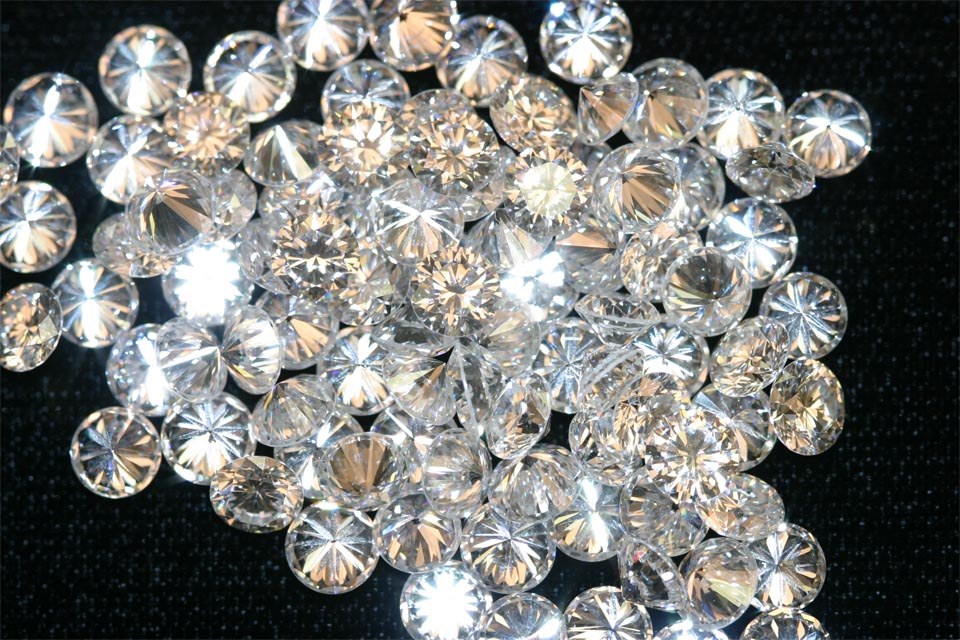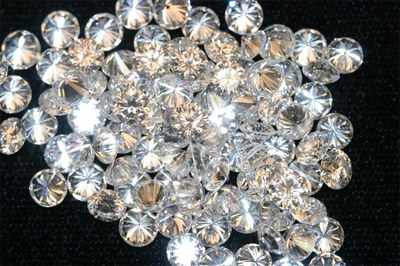Diamond Brightens the Performance of Electronic Devices and LEDs
Two new studies performed at the U.S. Department of Energy’s Argonne National Laboratory have revealed a new pathway for materials scientists to use previously unexplored properties of nanocrystalline-diamond thin films. While the properties of diamond thin films are relatively well-understood, the new discovery could dramatically improve the performance of certain types of integrated circuits by reducing their "thermal budget."
For decades, engineers have sought to build more efficient electronic devices by reducing the size of their components. In the process of doing so, however, researchers have reached a "thermal bottleneck," said Argonne nanoscientist Anirudha Sumant.
In a thermal bottleneck, the excess heat generated in the device causes undesirable effects that affect its performance. "Unless we come-up with innovative ways to suck the heat off of our electronics, we are pretty much stuck with this bottleneck," Sumant explained.
The unusually attractive thermal properties of diamond thin films have led scientists to suggest using this material as a heat sink that could be integrated with a number of different semiconducting materials. However, the deposition temperatures for the diamond films typically exceed 800 degrees Celsius—roughly 1500 degrees Fahrenheit, which limits the feasibility of this approach.
"The name of the game is to produce diamond films at the lowest possible temperature. If I can grow the films at 400 degrees, it makes it possible for me to integrate this material with a whole range of other semiconductor materials," Sumant said.
By using a new technique that altered the deposition process of the diamond films, Sumant and his colleagues at Argonne’s Center for Nanoscale Materials were able to both reduce the temperature to close to 400 degrees Celsius and to tune the thermal properties of the diamond films by controlling their grain size. This permitted the eventual combination of the diamond with two other important materials: graphene and gallium nitride.
According to Sumant, diamond has much better heat conduction properties than silicon or silicon oxide, which were traditionally used for fabrication of graphene devices. As a result of better heat removal, graphene devices fabricated on diamond can sustain much higher current densities.
In the other study, Sumant used the same technology to combine diamond thin films with gallium nitride, which is used extensively in high-power light emitting devices (LED). After depositing a 300 nm-thick diamond film on a gallium nitride substrate, Sumant and his colleagues noticed a considerable improvement in the thermal performance. Because a difference within an integrated circuit of just a few degrees can cause a noticeable change in performance, he called this result "remarkable."
"The common link between these experiments is that we’re finding new ways of dissipating heat more effectively while using less energy, which is the key," Sumant said. "These processes are crucial for industry as they look for ways to overcome conventional limits on semiconducting circuits and pursue the next generation of electronics."
The results of the two studies were reported in Nano Letters and Advanced Functional Materials. Both of these studies were carried out in collaboration with Prof. Alexander Balandin at the University of California-Riverside and his graduate students Jie Yu, Guanxiong Liu and Dr. Vivek Goyal, a recent Ph.D. graduate.
Funding for the research conducted at the Center for Nanoscale Materials was provided by the Basic Energy Sciences program of the U.S. Department of Energy’s Office of Science.
The Center for Nanoscale Materials at Argonne National Laboratories is one of the five DOE Nanoscale Science Research Centers, premier national user facilities for interdisciplinary research at the nanoscale supported by the DOE Office of Science. Together the NSRCs comprise a suite of complementary facilities that provide researchers with state-of-the-art capabilities to fabricate, process, characterize and model nanoscale materials, and constitute the largest infrastructure investment of the National Nanotechnology Initiative. The NSRCs are located at DOE’s Argonne, Brookhaven, Lawrence Berkeley, Oak Ridge, Sandia and Los Alamos National Laboratories. For more information about the DOE NSRCs, please visit http://nano.energy.gov.
The papers can be found online at:
http://onlinelibrary.wiley.com/doi/10.1002/adfm.201102786/abstract
http://pubs.acs.org/doi/abs/10.1021/nl204545q
About Argonne National Laboratory:
Argonne National Laboratory seeks solutions to pressing national problems in science and technology. The nation's first national laboratory, Argonne conducts leading-edge basic and applied scientific research in virtually every scientific discipline. Argonne researchers work closely with researchers from hundreds of companies, universities, and federal, state and municipal agencies to help them solve their specific problems, advance America's scientific leadership and prepare the nation for a better future. With employees from more than 60 nations, Argonne is managed by UChicago Argonne, LLC for the U.S. Department of Energy's Office of Science.


